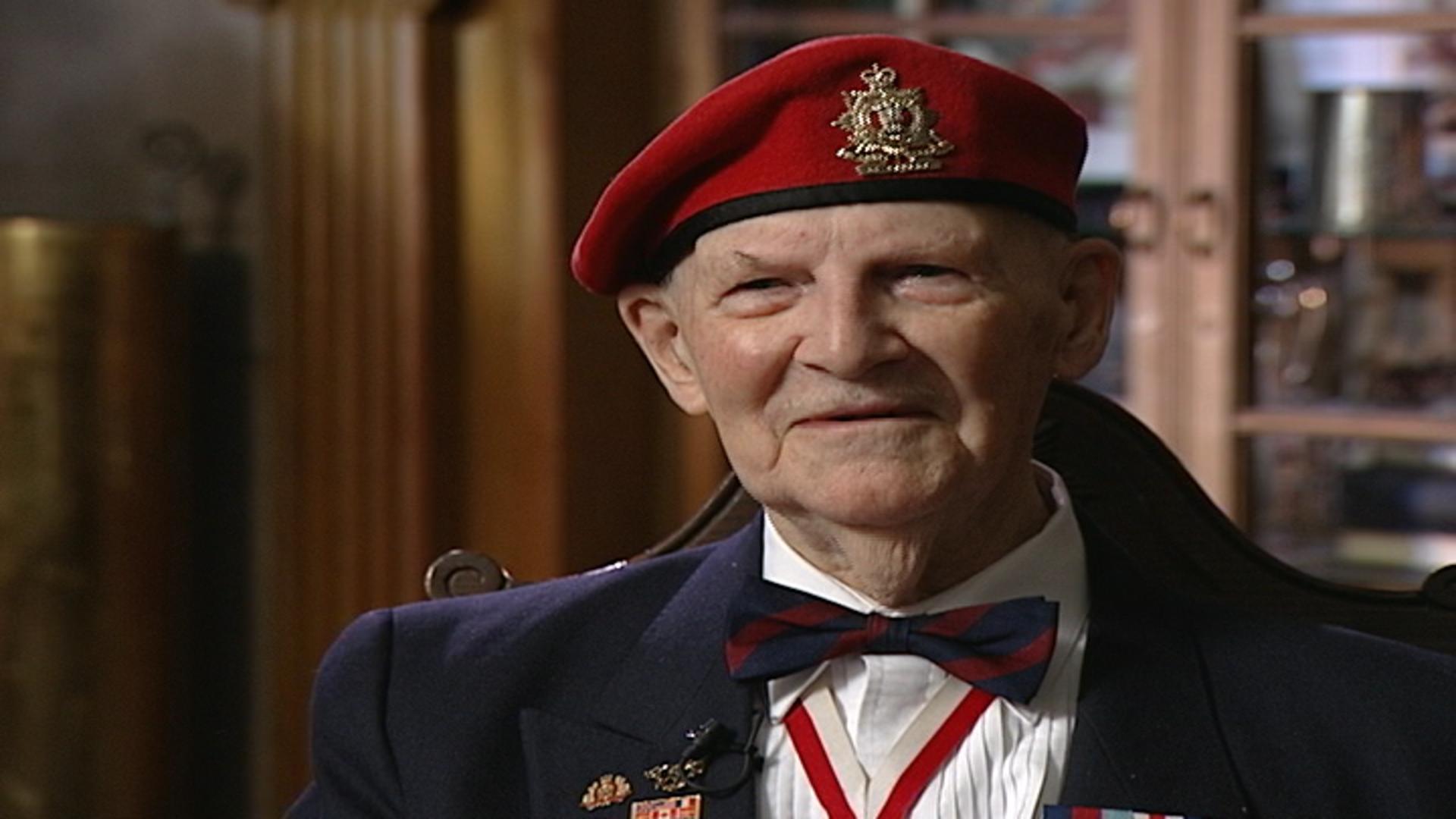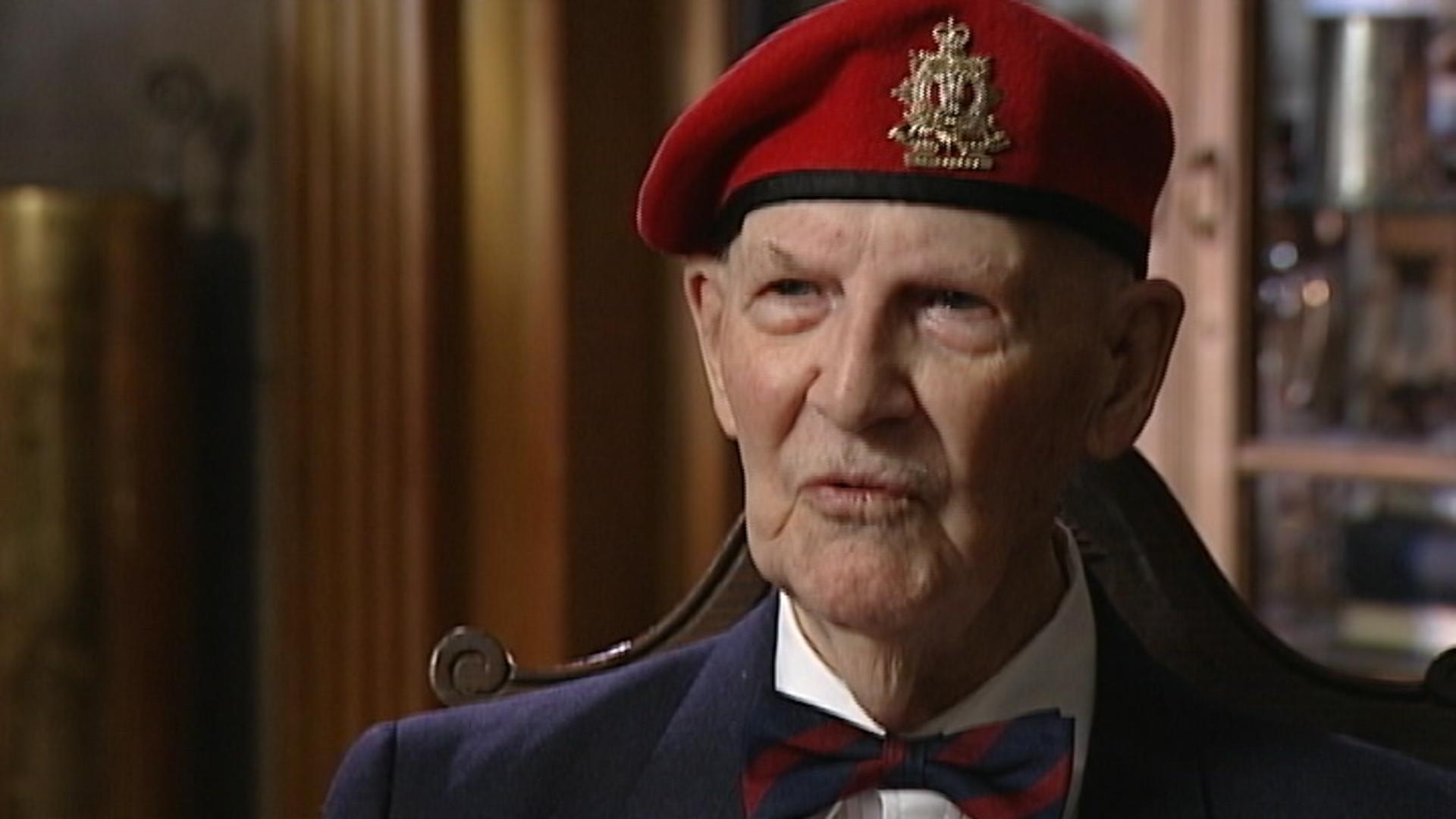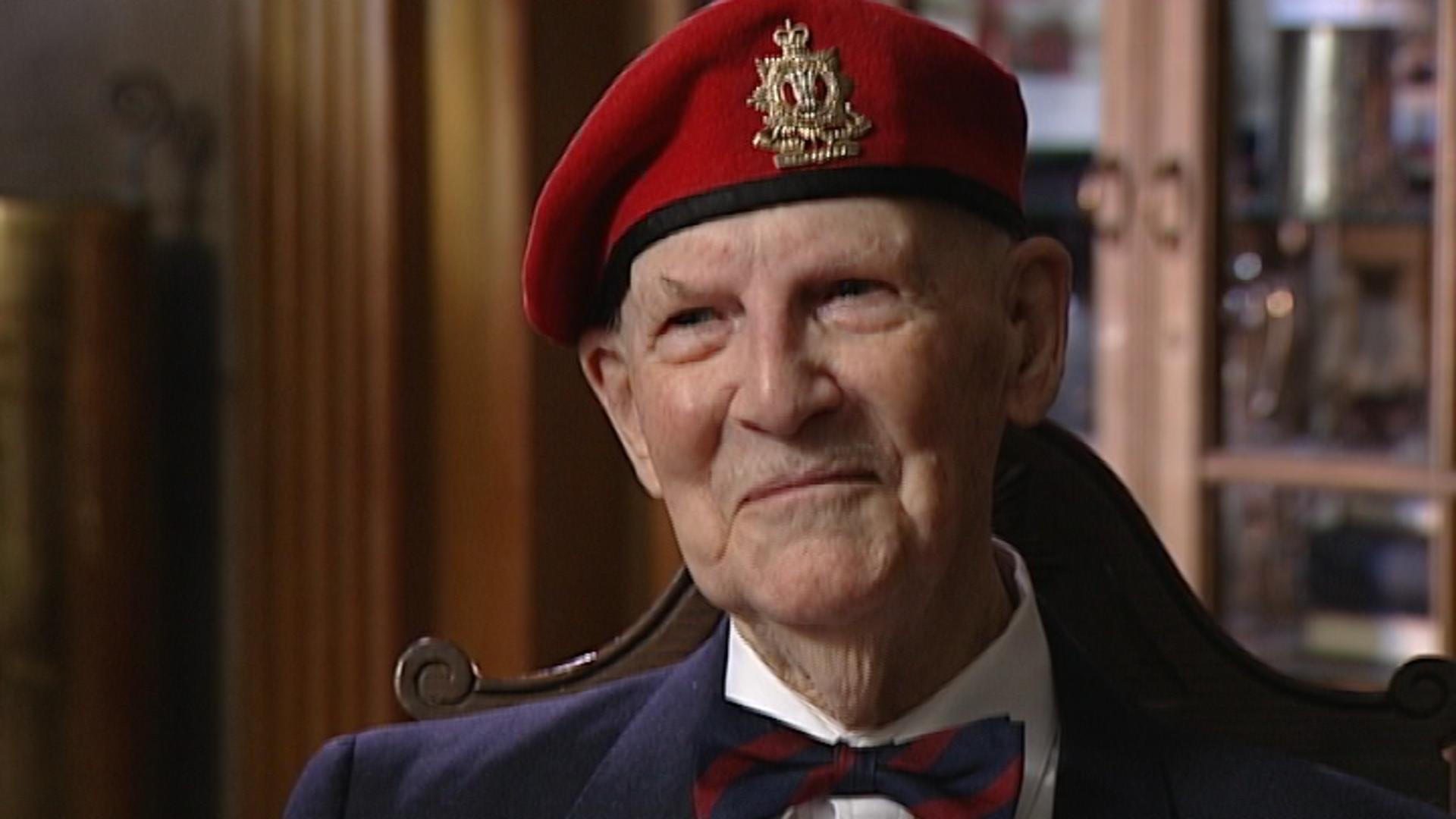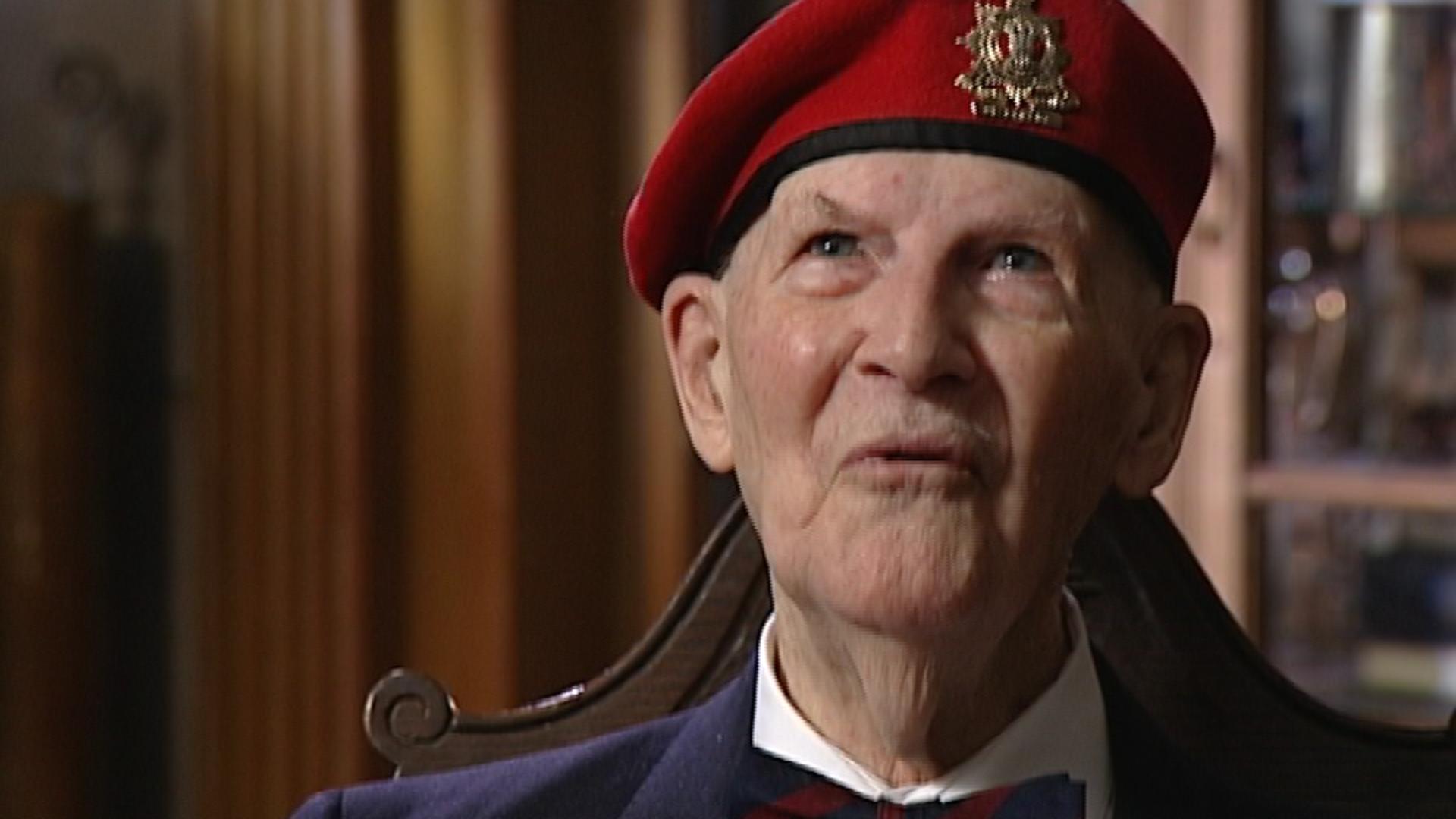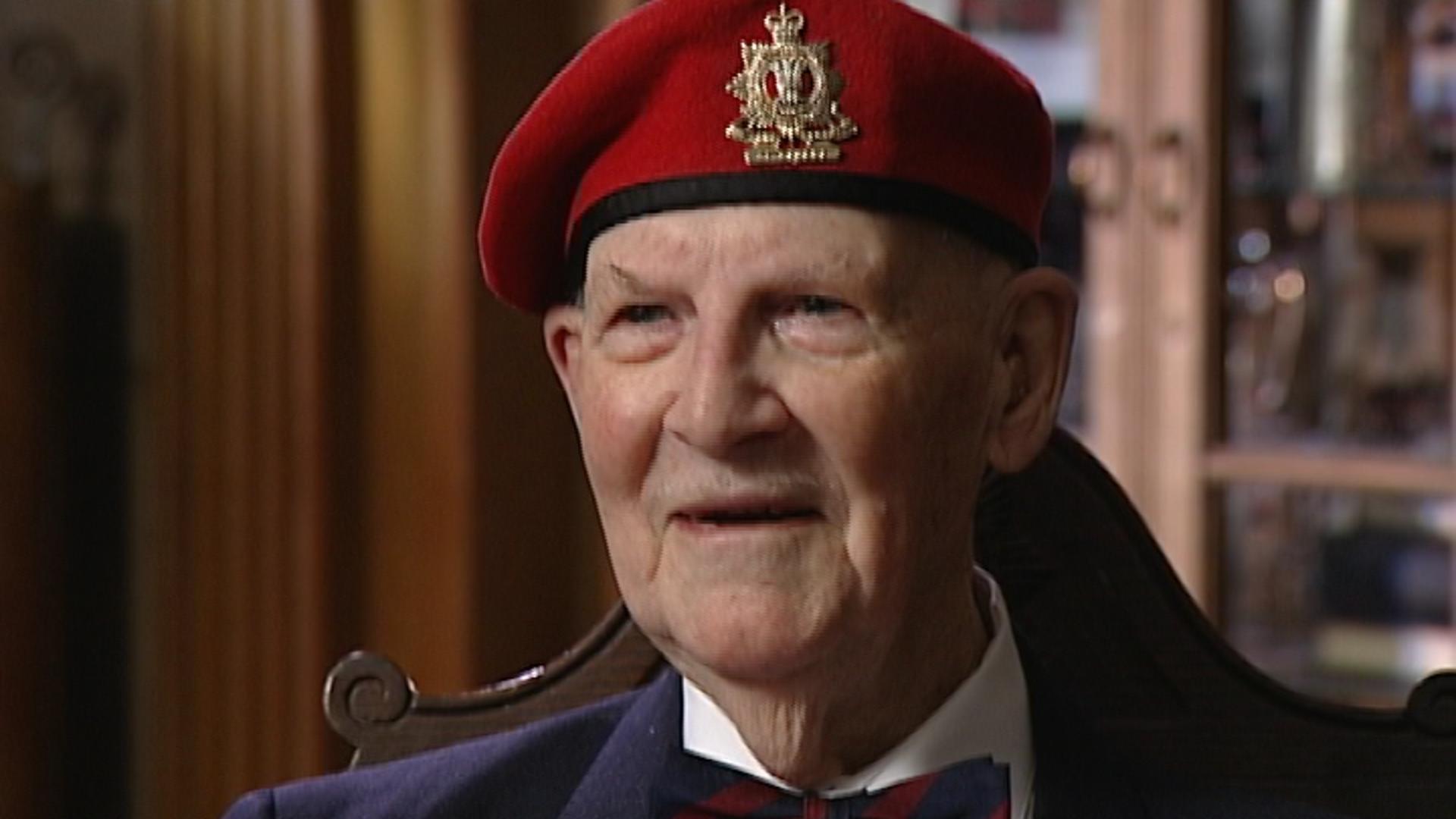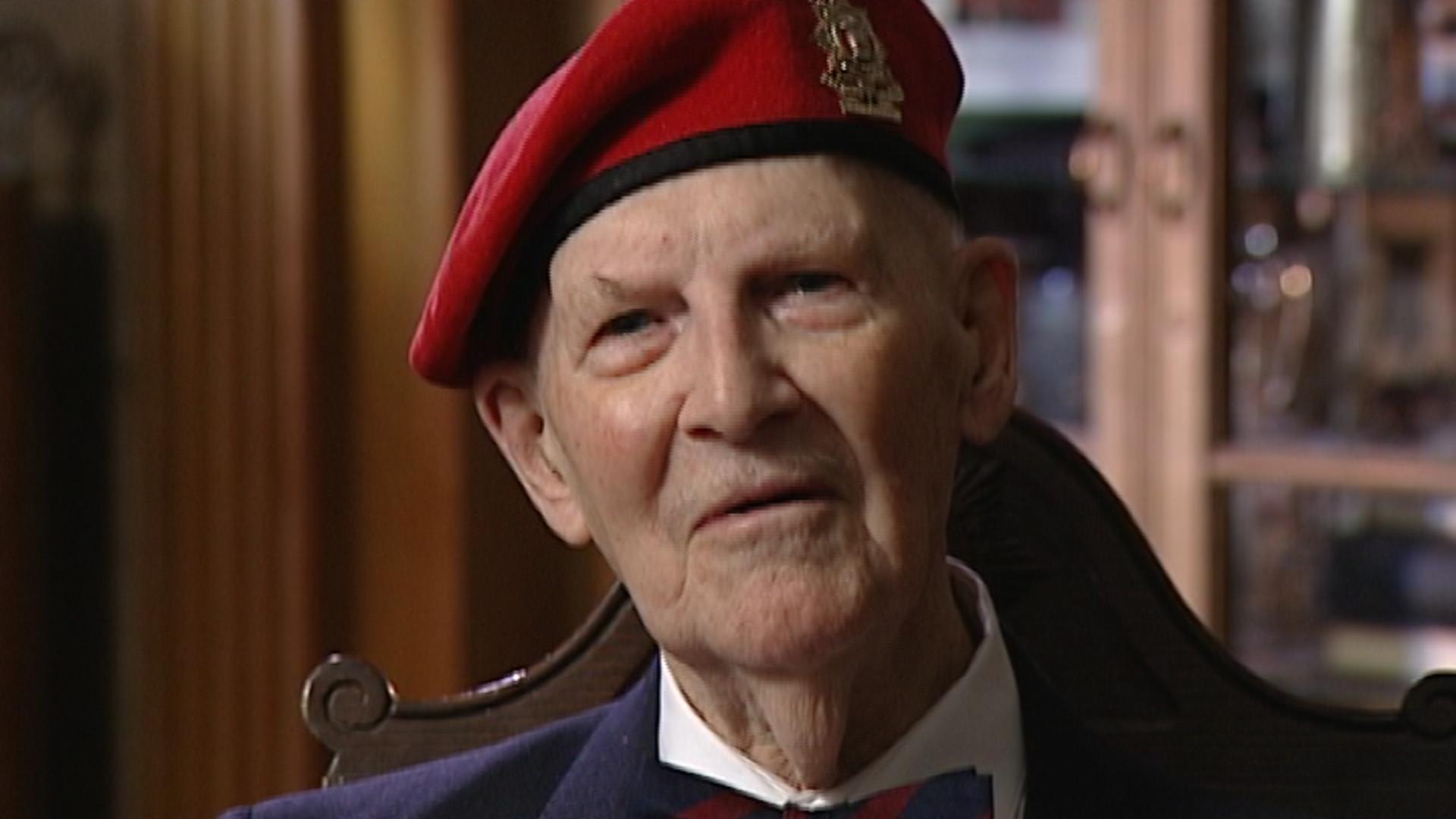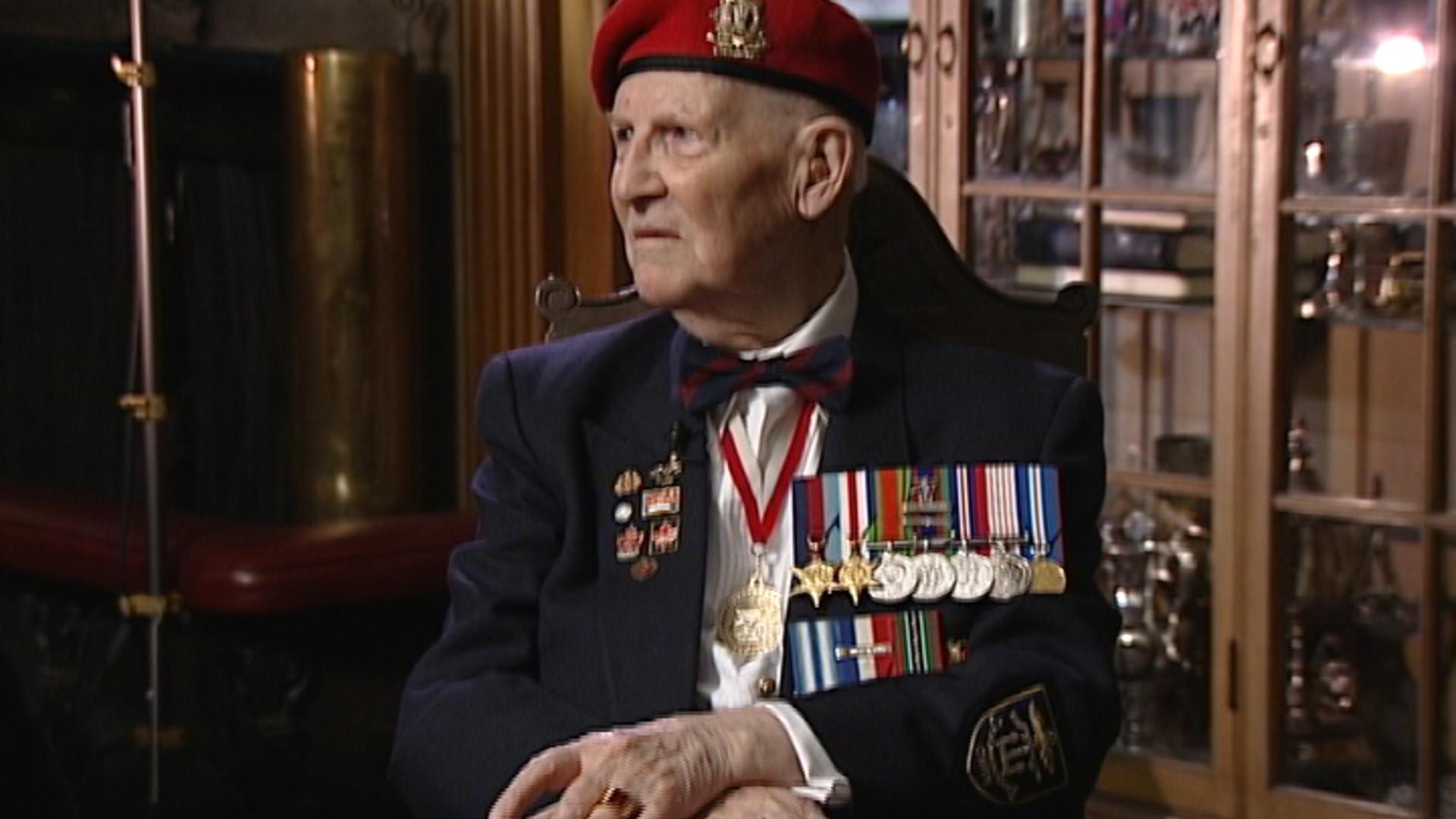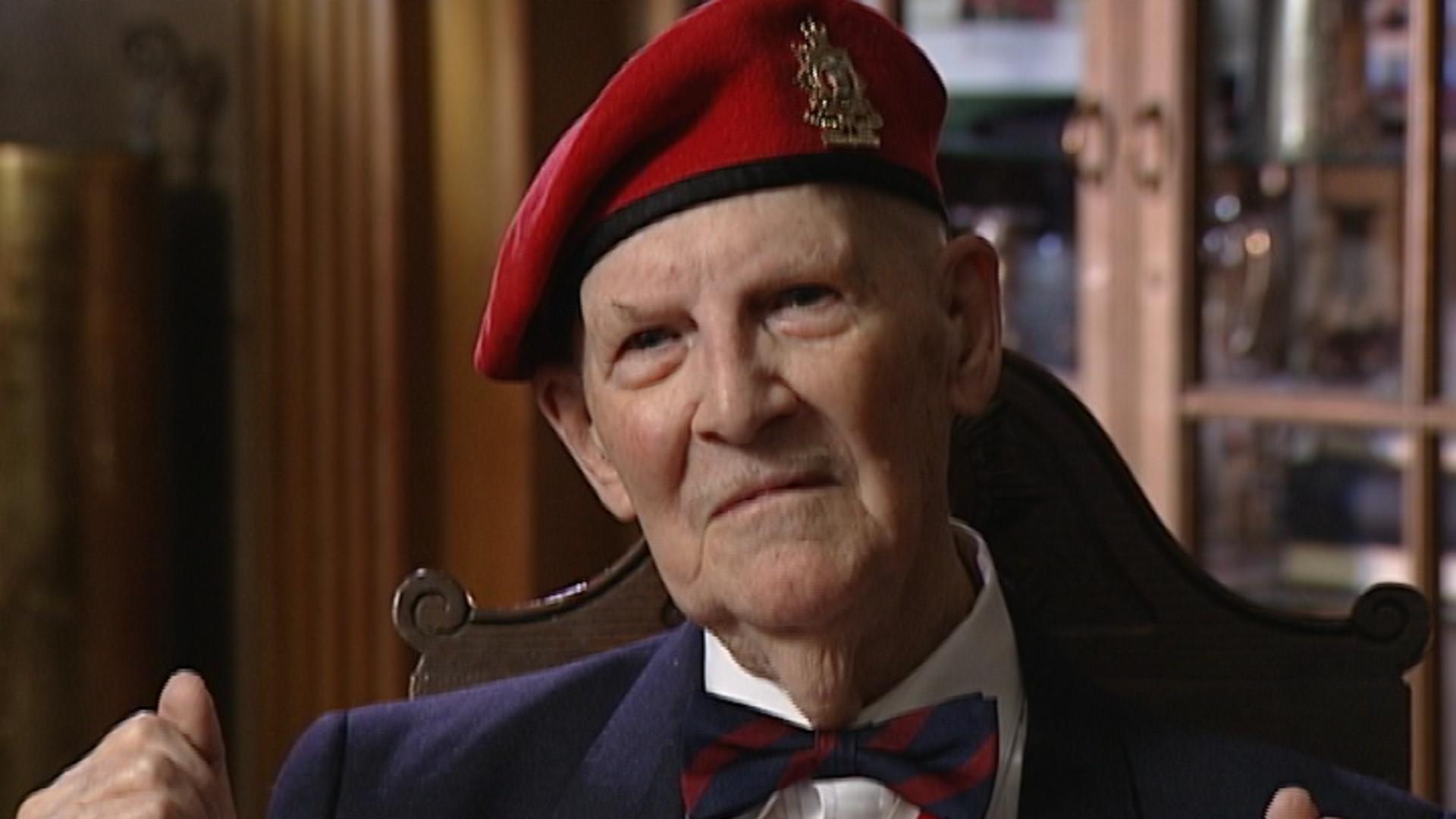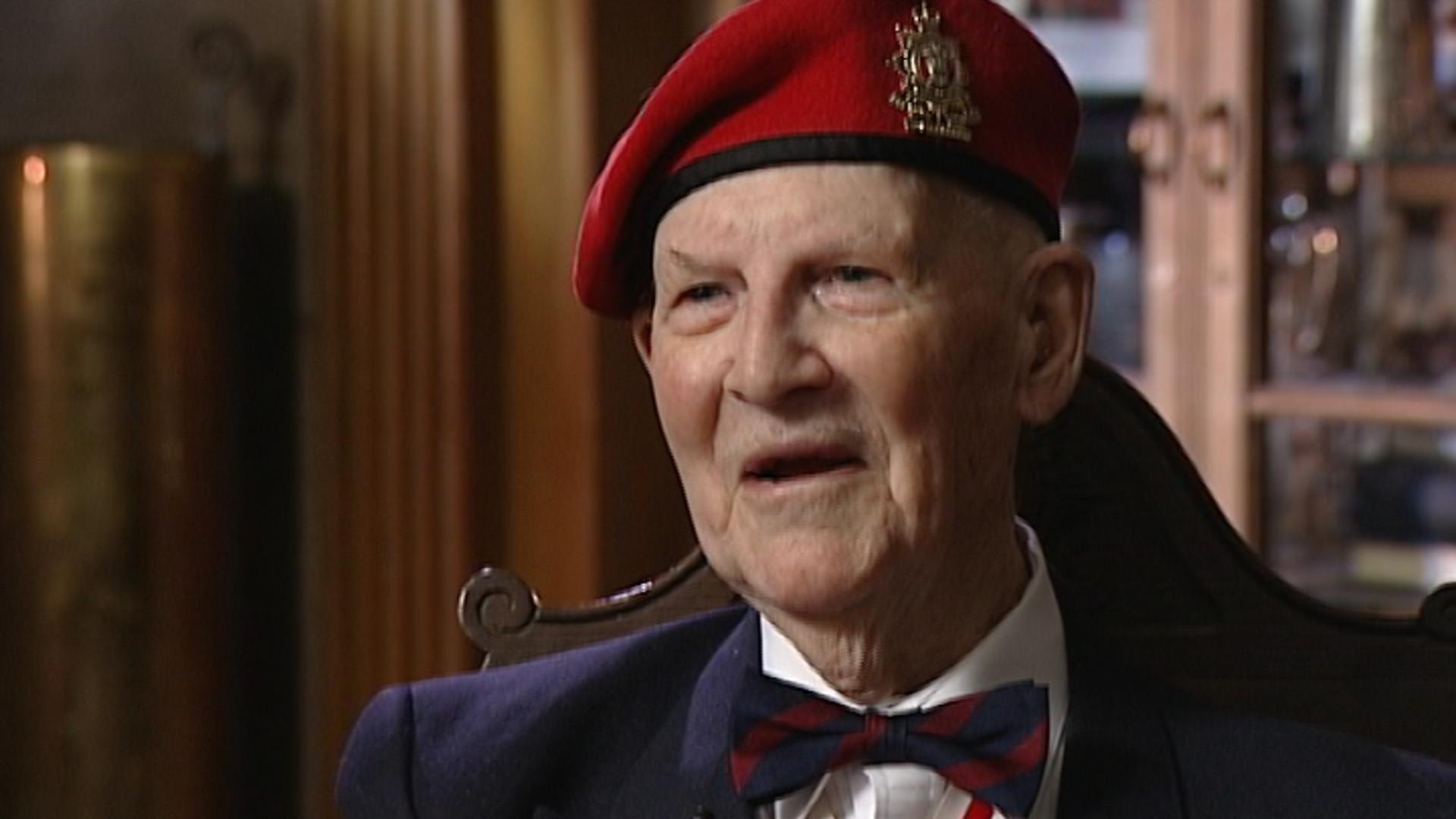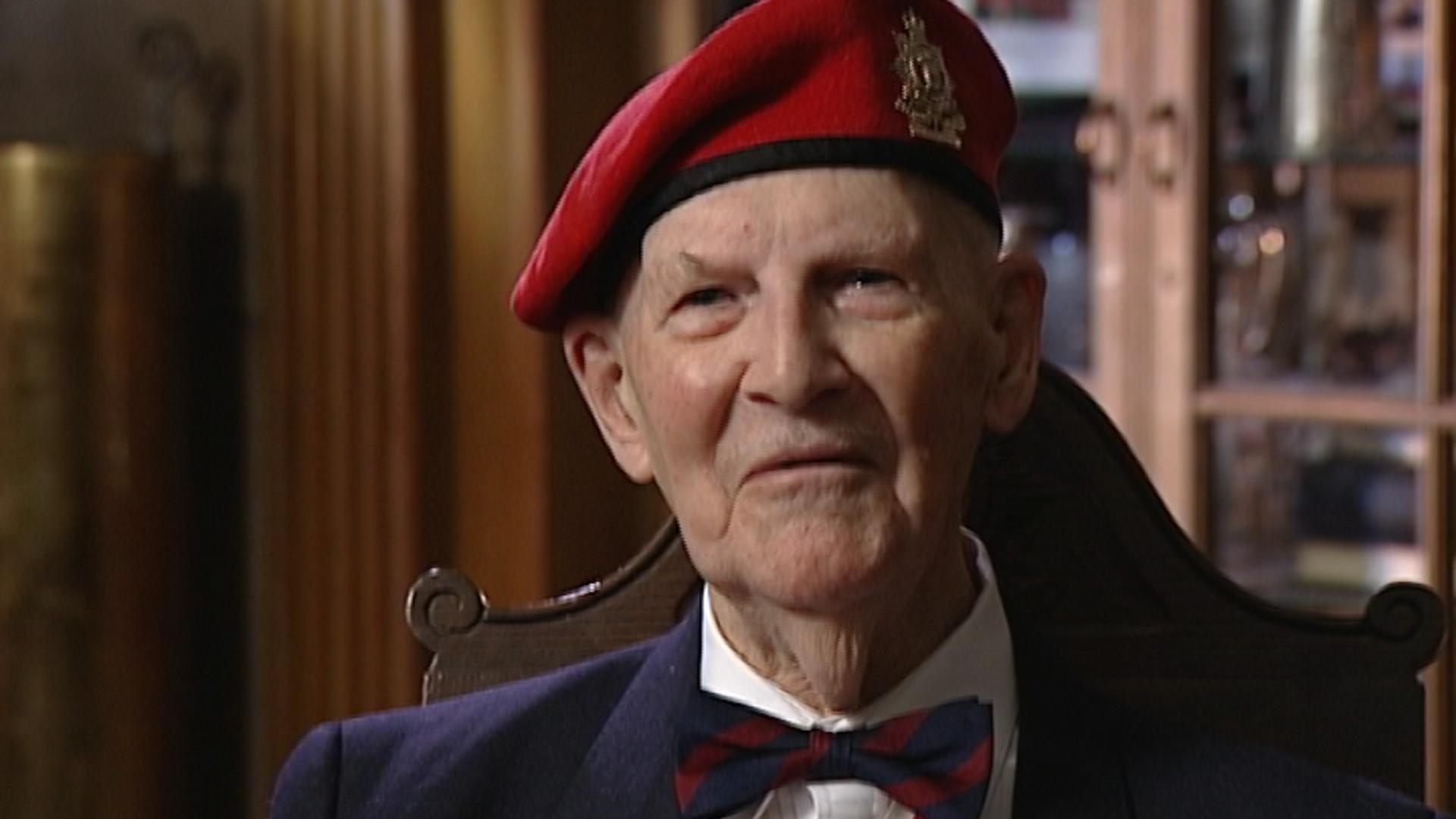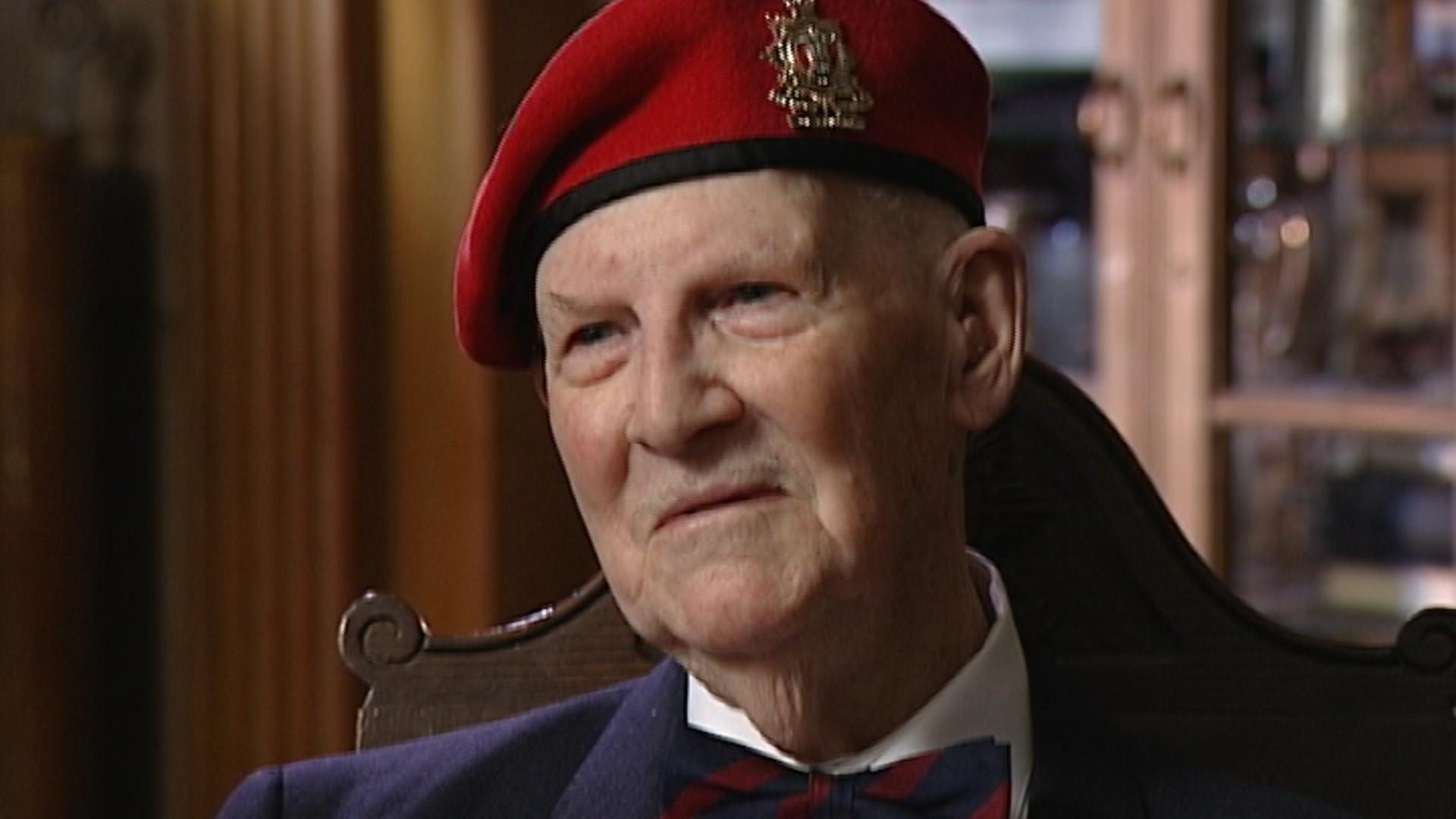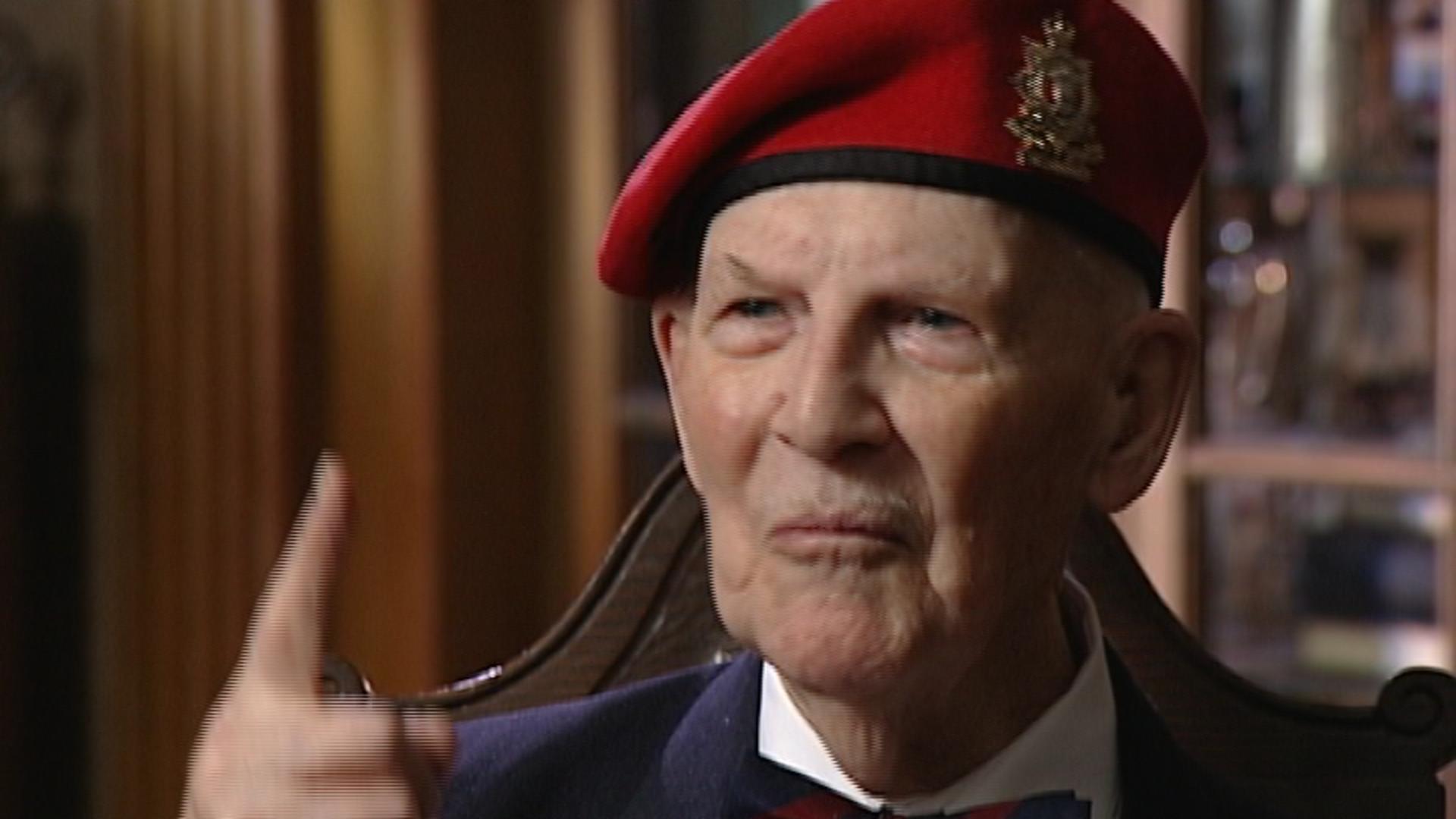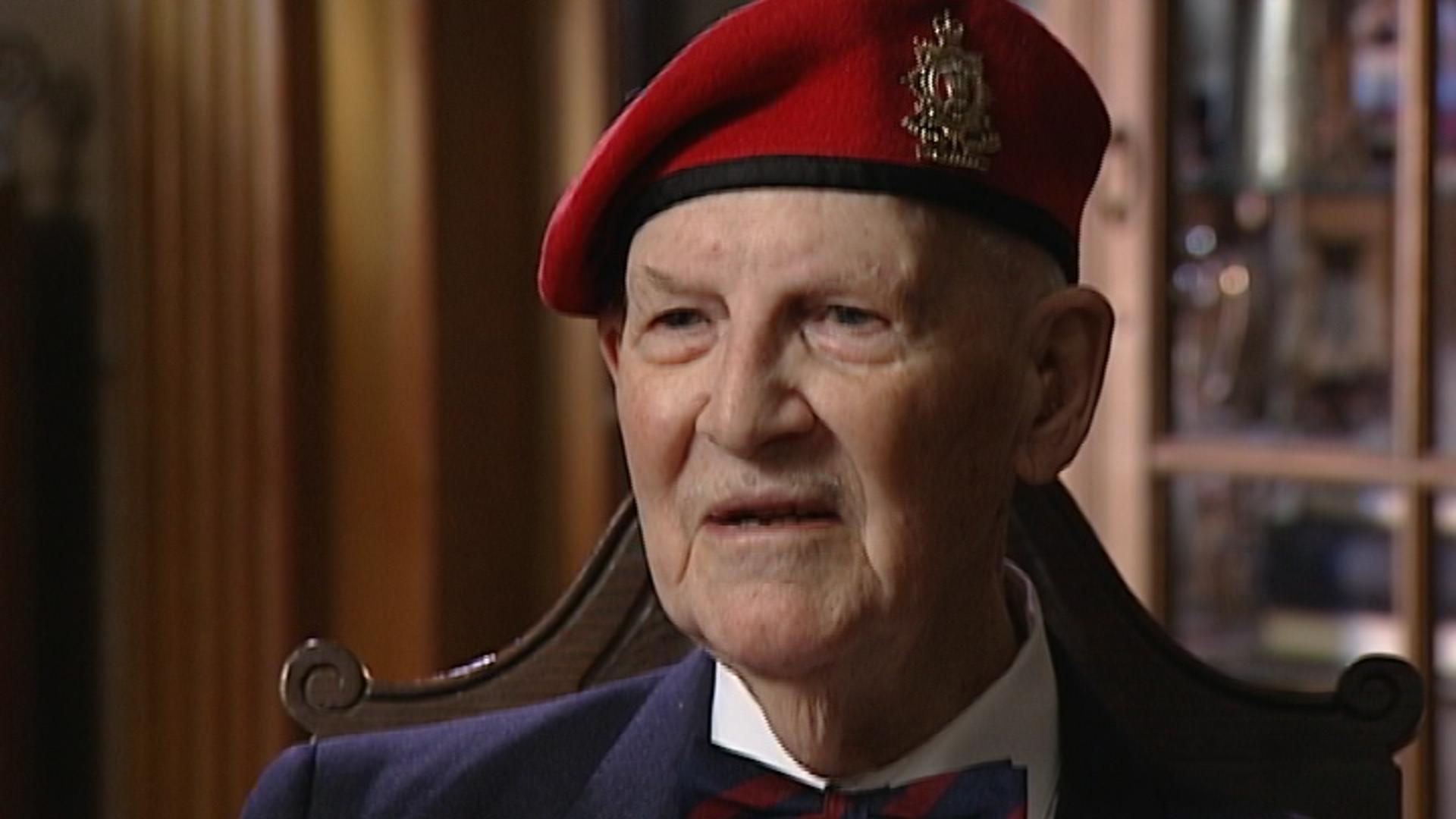The “Dieppe Murderers”
Heroes Remember
The “Dieppe Murderers”
So we get to the camp and, of course,
they do a strip search on everybody and
make sure you got nothing when you get in
there and then they put us in our
compound so we’re at the end,
the very end, a special compound.
Murderer’s compound, not POW’s, murderer’s.
We are the Dieppe murderers.
And so we’re not considered soldiers,
we’re considered murderers and should be
treated the same. So we get in there,
we don’t give a damn what they call us as
long as they give us something to eat.
So the British are in charge of the camp
there and they tell us, you know,
that things will be better in here rather
than out there and they will eventually
send us out to work parties like them,
most of them are out in work parties in
mines and lumber and mills and everything
else although the treatment wasn’t that
good by any means and so we figured
we would look forward to it.
So we got into our huts.
The huts we have in the camp are the
same as you have in the holocaust,
the same as the Jews;
they’re exactly the same.
You got the bunks,
they got two hundred into one section
of a hut and you got four bunks
high and the bottom bunk we didn’t
use the other three we did.
I was on the top bunk.
I liked the top bunk because it was the
warmest up by the roof in the winter time.
And you got straw mattresses,
that’s all they were made of straw (inaudible)
to lay on and one grey blanket
from the Red Cross, that was supplied but
that’s it, that’s all you had for bedding and
your uniform of course.
And pillows that were made out
of straw or anything you could make
out of and put your boots under your
head for a while, they make good pillows and
that way it would stop someone
from stealing them.
Related Videos
- Date modified:



